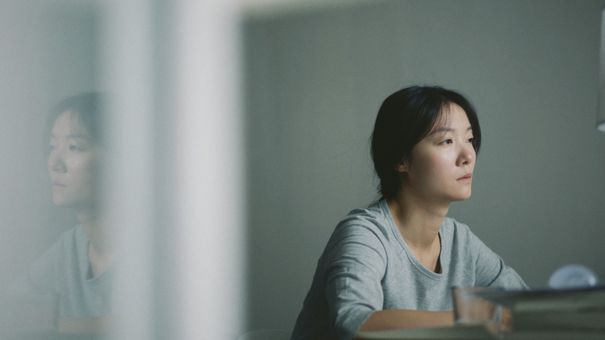Where Life Though Joyless Still is Calm
Expansive beyond its 90-minute runtime, Song Fang’s The Calming highlights the rarity of drawn-out depictions of feminine anhedonia
by Adina Glickstein

© HUANXI MEDIA GROUP
Song Fang’s second feature and Berlinale Forum entry THE CALMING (PING JING, China) is a drawn-out account of sadness stilling in a slow evaporation. Forgoing the sexist fixation on passive female distress, the film foregrounds Lin, a documentarian, recently-single and fighting through the creative stagnation that appends her affliction. Lin’s exterior stays stoic as she travels throughout China, Japan, and Hong Kong to exhibit her latest film, but anguish threatens to crack through the composure she maintains around her parents and professional counterparts. This facade, reiterated by a recurring procession of close-ups, becomes the film’s narrative locus: Lin’s travels fade into the background as an inner journey—the slow but active re-ignition of her capacity for joy—registers in her face’s gradual softening.
At times, THE CALMING’s lingering long-takes test the viewer’s attention span—but beyond the default art-house contrivance of Slow Cinema, there’s something forceful about this ruthless emphasis. Seemingly expansive beyond its 90-minute runtime, the film highlights the relative rarity of such protracted depictions of feminine anhedonia. THE CALMING offers slowness as an act of generosity: departing from the tired beats of a conventional break-up film, it prioritizes breathing room over dramatic reckoning. I counted at least six long takes lingering on Lin as she stares out the windows of various cab backseats. By the third of these shots, I noticed a hackneyed pattern, but by the fifth, the change clarified: the accretion of similar shots frames the minutiae of Lin’s emotional warming, indexed so subtly in her expressions and mannerisms that their transformation is nearly impossible to detect from one scene to the next.
Just like healing in real time: only in retrospect, after pain is afforded space for processing, can we notice its gradual resolution. Near the film’s end, Lin sits in a cinema—this time, as a spectator rather than a presenter—a single tear of catharsis on her cheek. We never see what she’s watching, just like we never see her bygone boyfriend: the instigators of her tears evade our grasp as Lin remains the sole subject of our witness.
In this insistence, THE CALMING works towards a new understanding of romantic mourning, recasting a universal ache that’s frequently essentialized as “feminine” into a potential route of resistance. In her pop-Lacanian “Sad Girl Theory,” Audrey Wollen postulates that the pain so often dismissed by being coded as female demands depiction so that it can be reframed as an active articulation. Wollen’s stepmother, Laura Mulvey, diagnosed how women onscreen were once doomed to passivity. Could reimagining girly melancholy as a process of active agency open up more progressive readings of feminine longing onscreen? Closely attending to the mechanics of Lin’s emotional upheaval, THE CALMING seems to suggest this possibility. In all its spaciousness and repetition, it focuses, unrelenting, on the microscopic changes—the affective labor, to borrow that tired term—that constitute active healing. Familiar emotional alchemy, but work nonetheless: in real time, change feels impossibly slow, but hindsight reveals its totality.

